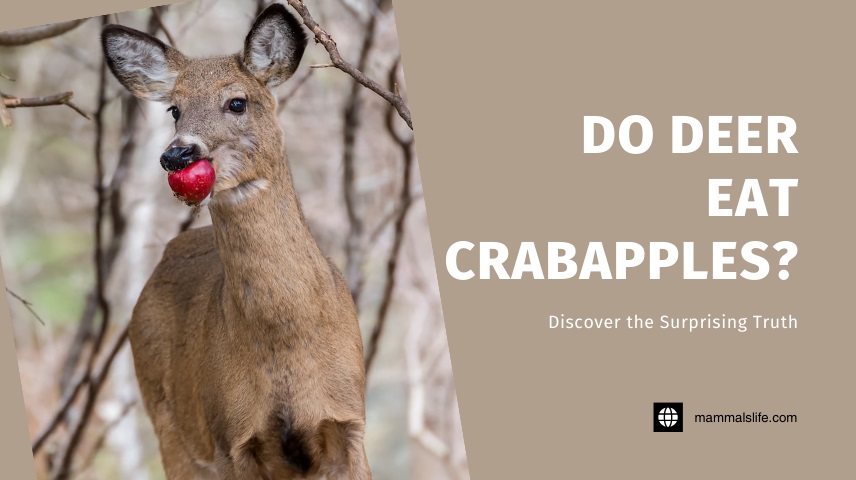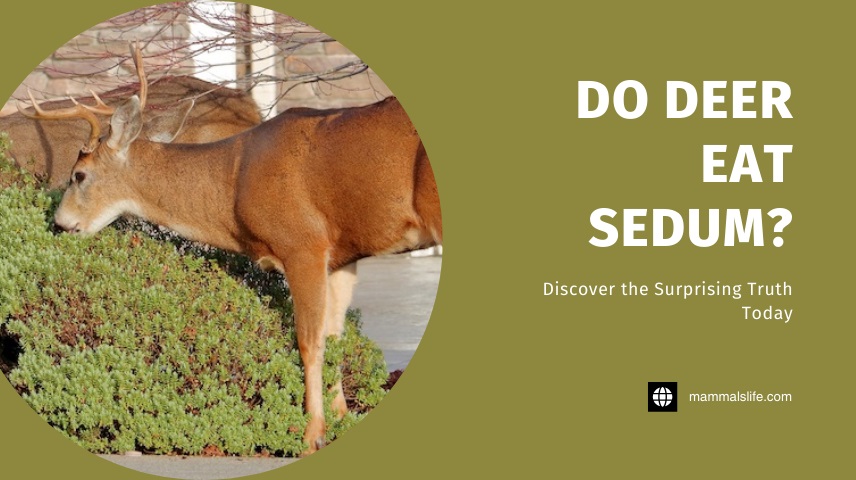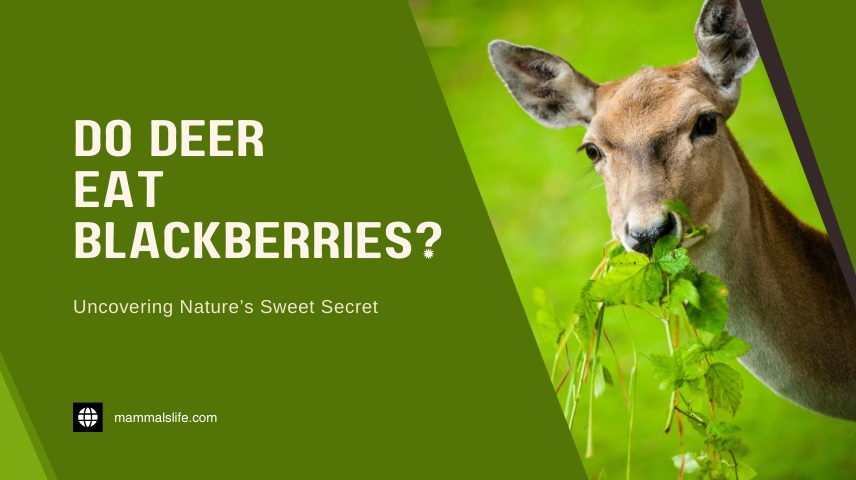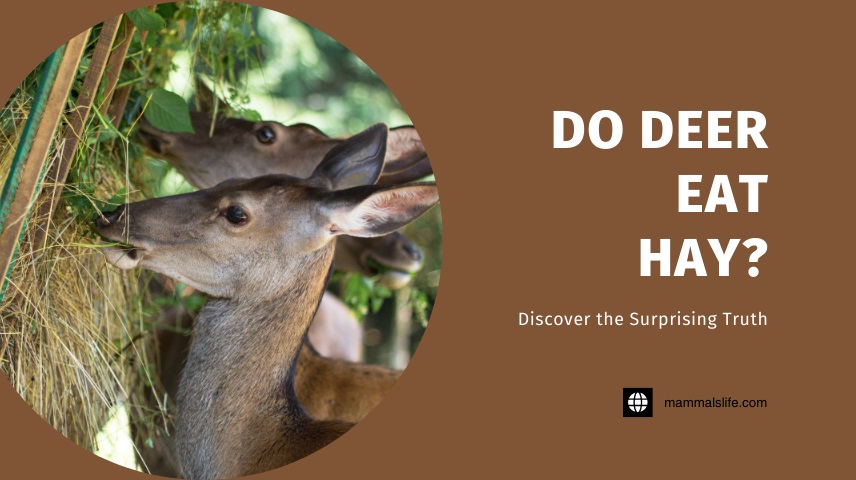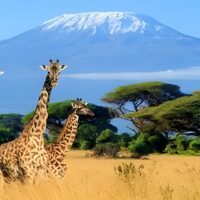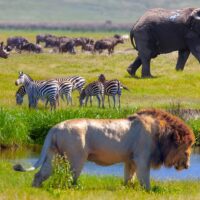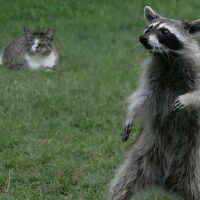Last Updated on February 22, 2025 by Mammals Life
Yes, deer eat crabapples. They find these small fruits highly appealing and nutritious.
Deer often forage for a variety of food, and crabapples are a favorite. These small, tart fruits provide essential nutrients that deer need, especially in the fall and winter months. Crabapples drop from trees and become easily accessible to deer.
Gardeners and property owners often notice deer frequenting areas where crabapple trees grow. This natural attraction can lead to increased deer activity in those locations. Understanding this behavior helps in managing landscapes and wildlife interactions effectively. Providing crabapples can also support deer populations during scarce food periods. Overall, crabapples play a significant role in the diet of deer.
Deer’s Diet
Deer have a varied diet. They eat plants, fruits, and nuts. Their diet changes with seasons.
Common Foods
Deer eat many common foods. Here is a list:
- Grass
- Leaves
- Twigs
- Acorns
- Fruits
Fruits include apples, berries, and crabapples.
Seasonal Variations
Deer’s diet changes with the seasons. Let’s see how:
| Season | Food |
|---|---|
| Spring | Young grass, leaves, and flowers |
| Summer | Fruits like berries and apples |
| Fall | Acorns and nuts |
| Winter | Twigs and woody plants |
In summer and fall, deer eat crabapples. They love the taste.
Crabapples Overview
Crabapples are a unique type of apple. They are small and often tart. Many animals, including deer, love them. This section will explore the types of crabapples and their nutritional value.
Types Of Crabapples
Crabapples come in various types. They differ in color, size, and taste. Here are some common types:
- Malus ‘Dolgo’: This type has a red color and is very sweet.
- Malus ‘Centennial’: These are small, red, and tart.
- Malus ‘Transcendent’: Known for its yellow color and sweetness.
- Malus ‘Whitney’: These are larger and have a sweet-tart flavor.
Nutritional Value
Crabapples are rich in nutrients. They offer many health benefits for deer and other animals.
| Component | Amount per 100g |
|---|---|
| Calories | 50 kcal |
| Vitamin C | 8 mg |
| Fiber | 2g |
| Carbohydrates | 14g |
Crabapples also contain antioxidants. These help in fighting off diseases. They are a nutritious choice for deer.
Deer And Crabapples
Deer are curious creatures with diverse diets. One of their favorite treats is crabapples. These small fruits are appealing to deer for many reasons.
Attraction To Crabapples
Crabapples are rich in nutrients. They offer vitamins and sugars. This makes them irresistible to deer. The sweet smell of ripe crabapples draws deer from afar.
Deer have a keen sense of smell. They can detect crabapples easily. The bright color of crabapples also attracts deer. This visual cue helps deer find the fruit quickly.
Feeding Behavior
Deer are known to nibble on crabapples. They usually eat the fruit straight from the tree. Deer often visit crabapple trees in the early morning or late evening.
Sometimes, deer eat fallen crabapples. They prefer ripe and juicy fruits. Deer may also strip the bark from young crabapple trees. This behavior can harm the trees.
| Deer Behavior | Impact on Crabapples |
|---|---|
| Eating ripe fruits | Reduces fruit availability |
| Nibbling on leaves | Can stunt tree growth |
| Stripping bark | May kill young trees |
Environmental Impact
Deer eating crabapples can have a significant environmental impact. They affect the ecosystem balance and plant growth. Understanding these impacts helps manage wildlife and plant life effectively.
Ecosystem Balance
Deer play a crucial role in maintaining ecosystem balance. They act as natural pruners, helping control plant populations. Deer eating crabapples can reduce the number of crabapple trees. This reduction affects other species that rely on these trees.
Birds and small mammals often use crabapple trees for shelter and food. A decline in crabapple trees can lead to fewer birds and mammals in the area. This change can disrupt the local food chain.
Plant Growth
Deer eating crabapples also affects plant growth. Crabapple trees may struggle to grow if deer eat too many apples. This can lead to fewer new trees growing in the area.
Healthy plant growth is essential for a thriving ecosystem. Crabapple trees provide food and shelter for many species. If deer eat too many crabapples, the trees may not produce enough seeds. This can lead to fewer new trees and less plant diversity.
Managing deer populations can help maintain healthy plant growth. It ensures that crabapple trees and other plants can thrive.
Benefits For Deer
Deer love eating crabapples, and these fruits offer many benefits. Let’s explore why crabapples are good for deer.
Nutritional Benefits
Crabapples are a great source of essential nutrients for deer. They provide vitamins, minerals, and energy. This helps deer stay healthy and active. Here are some key nutritional benefits:
- Vitamins: Crabapples are rich in vitamins A and C.
- Minerals: They offer minerals like potassium and calcium.
- Energy: The natural sugars give deer a quick energy boost.
Health Impacts
Eating crabapples can have positive health impacts on deer. These fruits can improve their overall well-being. Let’s take a closer look:
| Health Impact | Details |
|---|---|
| Immune System | Vitamin C boosts the immune system. |
| Bone Health | Calcium helps in maintaining strong bones. |
| Digestive Health | Fiber aids in better digestion. |
Crabapples can also help deer during harsh winters. The energy from sugars keeps them warm and active. This makes crabapples a valuable food source for deer.
Gardening Tips
Deer are often seen as a pest in gardens, but they can also bring beauty. Understanding their behavior helps you balance protecting your plants and encouraging wildlife. Here are some gardening tips to manage deer in your garden.
Protecting Plants
Deer love to eat many types of plants, including crabapples. To protect your plants, consider using these strategies:
- Fencing: Use a tall fence around your garden. Deer can jump high, so make sure it’s at least 8 feet tall.
- Repellents: Apply deer repellents regularly. These can be sprays or granules that make plants taste bad to deer.
- Plant Selection: Choose deer-resistant plants. Some plants are less appealing to deer, like lavender and marigolds.
Encouraging Wildlife
While protecting your plants, you can also create a wildlife-friendly garden. This helps maintain a balanced ecosystem. Here are some tips:
- Native Plants: Plant native species. They attract local wildlife and are better suited to your environment.
- Water Sources: Provide water for animals. A birdbath or small pond can attract birds and other wildlife.
- Shelter: Create shelters with bushes and trees. Wildlife needs places to hide and nest.
Balancing plant protection and wildlife encouragement can create a harmonious garden. Use these tips to enjoy both healthy plants and visiting deer.
Frequently Asked Questions
Do Deer Eat Crabapples?
Yes, deer enjoy eating crabapples, especially during fall and winter.
Are Crabapples Safe For Deer?
Crabapples are safe and nutritious for deer, providing essential vitamins and minerals.
When Do Deer Eat Crabapples?
Deer typically eat crabapples in fall and winter when other food sources are scarce.
Can Crabapples Attract Deer To My Yard?
Yes, crabapples can attract deer, making them a popular choice for wildlife enthusiasts.
Conclusion
Deer do eat crabapples, making them a natural food source. These fruits provide essential nutrients for wildlife. Planting crabapple trees can attract deer to your garden. This helps in creating a vibrant, wildlife-friendly environment. Enjoy observing these beautiful creatures while contributing to their natural diet.

